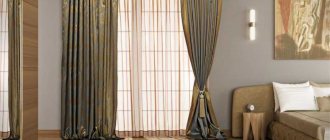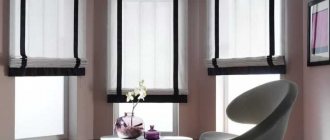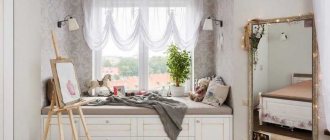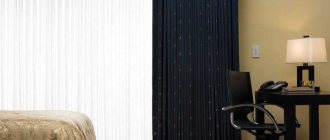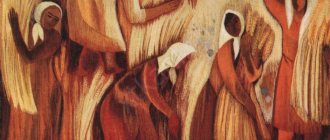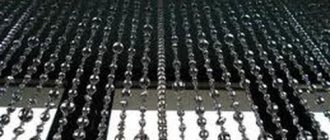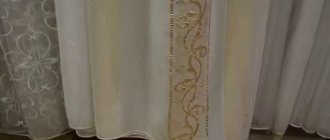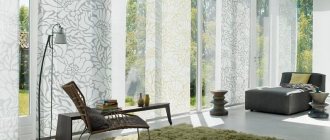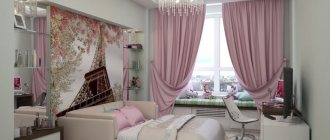general description
So, what is a reaper? This is a fabric that has a wrinkled structure similar to an applied pattern with a shadow effect. The fabric has elasticity, has different fibers in its composition, and differs in density and purpose. It is obtained by weaving threads with crepe twist. The material is rough to the touch.
To create a crinkled effect, several technological techniques are used. In any case, the material turns out beautiful and easy to care for. The header can be draped and fits gracefully in the folds.
For the first time, a relief pattern on a woven fabric appeared in silk crepe through the use of multiple twisted threads. The original grainy surface, waves, creases, wrinkles and small folds of different directions form the texture of the material.
The fabric produced is plain, with a printed pattern or print, rainbow. The surface may be matte or slightly shiny. A high-quality header is used as a bed, shirt, curtain, blouse and dress.
Articles on the topic (click to view)
- Curtain design for the kitchen 2022
- Stylish curtains for the hall, fashionable in 2022
- Fashionable curtains for the hall in 2022
- Photo of interior design 2022 with curtains
- Step-by-step instructions for creating Japanese curtains with your own hands
- Photo of the kitchen and bedroom interior with Japanese curtains
- Electric drive for curtains
Fabric reaper for curtains and fashionable clothes
“Harvester” fabric is a fabric with a textured surface that tends to stretch. The header fabric is beautiful and easy to care for. The relief effect is achieved using various technological techniques, and depending on them, materials of different densities are obtained. In addition to technology, these fabrics differ in the composition of their raw materials, and therefore have specific purposes. There are fabrics for clothing, bed linen, curtains, and accessories.
The reaper fabric is related to gauze, which was admired by girls of the 70s and 80s of the 20th century. However, gauze is thin and soft, loose and relatively transparent, almost weightless fabric, but it also has the appearance of some bruising. Many types of headers appeared around the same years as gauze, but they have greater density and clearer relief.
Header cloth is a type of crepe. Crepe is a group of fabrics, different in their weaving and composition, characterized by an uneven, rough structure. Crepe fabrics can be made from different materials. The word crepe itself means the name of the technique of weaving fibers, which uses repeated strong twisting of the threads.
The twisting force of the fibers increases many times, resulting in a stronger material. The crepe reaper has some “springiness”, the ability to stretch, and sometimes, depending on the source raw material, the fabric has a beautiful shine. The embossed surface of the fabric comes in a variety of patterns.
Composition and production technology
Durable, wrinkle-resistant fabric is in high demand and is currently produced from viscose, cotton and polyester fibers. It is worth noting that the material of the header is predominantly synthetic fabric.
The relief attracts attention and amazes with its variety of patterns. To obtain it on the finished fabric of satin, crepe, silk, cotton, chiffon, organza, satin, linen or calico, several techniques are used:
- Heat treatment of woven fabric
- Special thread twisting technology
- The use of threads from different fibers after full or partial heating.
Header classification
Crinkled fabric is divided into several types depending on its composition. Each has individual properties and purpose.
The main categories look like this:
- Natural silky or cotton crepe made from tightly twisted fibers. It is more comfortable to use and hygienic. Suitable for women's wardrobe and men's shirts, bed linen and curtains.
- Crash viscose fabric is also made from artificial fiber. The “shrinking” effect is obtained by heat treatment. The material is beautiful, light and affordable, wears well in hot weather. However, it is inferior to natural fabric in strength and durability of the relief. Decorative textiles are made from it and clothes for women are sewn.
- Blended and synthetic crinkled material to which polyester threads are added. Synthetics make the fabric affordable and very durable, but the fabric becomes stiff and is not suitable for bedding sets. Festive clothes, bedspreads and curtains are made from this fabric.
- Stone Washed material with a “boiled”, “crumpled” structure like denim. Synthetic fabric is dense, durable, and does not deform. Due to the use of polyurethane thread and polyvinyl chloride impregnation, it becomes waterproof and resistant to temperature changes. Designed for camping equipment, tents, travel bags and backpacks. It is used to make equipment for tourists and fishermen.
How is a reaper made?
To produce such fabric, only thin textiles are used: satin, calico, cotton. If we compare the fabric with the others, it is significantly softer and easy to drape. The crepe stretches a little, but returns to its shape - the “bruises” created during manufacturing do not smooth out when used correctly. Today, the material is used to create clothing, bed linen and curtains.
Cotton fabric
The effect of crinkled fabric is achieved through different processing methods:
- in silk and cotton textiles, the fibers are strongly twisted when weaving;
- finished fabrics made of viscose or polyester threads with the addition of cotton and wool are subjected to heat treatment;
- Stone Washed fabric is woven from specially treated polyester fibers and impregnated with a polyurethane mixture.
Advantages of crinkled fabric
Regardless of the composition and production technology, crinkled fabrics have common advantages:
- Effective and beautiful appearance due to the relief structure.
- Strength and elasticity thanks to crepe twisting, weaving and heat treatment.
- Wear resistance. Products made from crinkled fabric look aesthetically pleasing even after long-term use.
- Wrinkle-resistant, making it easier to care for.
- Durability of finish and color.
- The material is easy to wash and does not require dry cleaning.
- Practicality and unpretentiousness.
Pros and cons of bedding and curtains made from crinkled materials
Crinkled crepe is a material that has more advantages than disadvantages. It is thanks to this that he gained wide popularity and has not lost it to this day. The advantages of the fabric include:
- beautiful, spectacular appearance – the products look expressive and rich;
- wear resistance and durability;
- wrinkle-resistant and no need for ironing - even after long use, the products look fresh and neat;
- restoration of shape - “bruises” stretched due to stress will appear again after the washed fabric has dried;
- easy care - the products can be washed in a machine, subject to mandatory adherence to the manufacturer's recommendations and do not require careful ironing;
- huge selection of textures and colors.
Despite the long list of advantages, the material also has disadvantages. It is sensitive to changes in humidity, and material made from natural raw materials can be quite expensive. In addition, fabric made from viscose is inferior to polyester, cotton and silk in the durability of the relief.
Crash in clothes
Crinkled fabric is widely used in clothing production. Thin relief fabric looks most advantageous.
- Cotton is weak - a kind of harvester material. The description says that this is a knitted fabric with a light, corrugated structure like a “birch” pattern. The cotton fabric is thin and single-layer, ideal for hot days. Clothes for children and adults are made from it: shorts, T-shirts, tunics.
- Thin and delicate gauze reaper fabric. It is very soft due to its loose structure, like gauze. The material holds its shape well and does not wrinkle. Consists of viscose fibers. Designed exclusively for summer wardrobe: dresses, scarves, tunics and bandanas.
What do they make from a reaper?
Crepe is made from various raw materials, from natural expensive silk to synthetic polyester, so its use is very wide. Depending on the composition of the material, various things are sewn:
- the cotton reaper is suitable for creating women's dresses, blouses, men's shirts, bed linen, curtains, children's clothing;
- viscose is used for the manufacture of women's wardrobe items and interior textiles, and thin and embossed gauze (received its name due to the loose gauze structure) is used only for summer wardrobe;
- fabric with a predominance of polyester threads is suitable for creating festive clothes, curtains and bedspreads;
- Stone Washed fabric is thick and waterproof and is used to make a variety of outdoor gear, including tents and backpacks.
Curtain header
Expert opinion
Mikhailova Maria Vasilievna
Furniture store manager. Knows everything about comfort and interior design
Curtains and drapes made of crinkled fabric with the addition of synthetic polyester fibers are a combination of practicality and excellent decorative properties. The material is durable, stable in texture and easy to wash.
Curtain textiles can be dense and light, matte and shiny, with fine patterns and spectacular 3D designs. Several main types of curtain headers are produced:
- Crash is deep creases and folds on the surface.
- Tergalet – pearlescent shine and flowing texture.
- Crinkle - a relief of small and thin grooves.
The header is suitable for rooms of all styles, for creating draperies and flowing patterns. A variety of colors and shades allows you to choose the right material. The fabric does not accumulate dust, retains its shape for a long time and allows air to pass through.
Advantages and properties of the header
1.
Beautiful appearance. The beauty of the fabric is achieved through the originality of the relief surface. Products made from this fabric look stylish and impressive.
2.
Wrinkle resistance. The crinkled fabric does not need ironing, so even after prolonged use the products look great.
3.
Strength and wear resistance. A special manufacturing technology gives the fabric strength and density, while leaving it light.
4.
Easy care. This material is machine washable, no dry cleaning required.
You can talk for a long time about each type of reaper, naming its advantages, and the most important among them is easy maintenance.
Care without problems
The advantage of the harvester cloth is that it does not wrinkle and does not require ironing. Easy to care for, but looks nice and neat. When purchasing, you need to pay attention to the composition, on which consumer characteristics and care rules depend.
The crinkled material tolerates machine washing and spinning well. For natural fabrics, choose a delicate mode. The temperature should be +30-40 °C. Use soft detergents, preferably gel ones. Delicate crinkled silk is washed by hand in cool water. Press carefully in the direction of the folds.
Dry things flat out in natural conditions. Exposure to sunlight should be avoided. There is no need to iron crushed fabrics. Perhaps to increase the volume of the dress. This is done through a damp iron. To restore wrinkles and “wrinkling”, simply moisten the fabric with water.
Under load during operation, the “crinkiness” slightly diverges without losing its decorative effect, and after washing it is restored.
Some products shrink, but the situation is easily corrected by steaming while simultaneously stretching the fabric. The procedure is performed from the wrong side. You don't need to apply much force to avoid stretching the item excessively. Stretched products return to their original appearance after moistening.
It is recommended to store wrinkled items gathered into a bundle or tied into knots in fabric covers in order to preserve the texture longer.
How to care for wrinkled products?
The material can easily withstand washing with a spin cycle, but at a temperature not exceeding 40 degrees using gentle, or preferably liquid, detergents. It is better to wash silk by hand in cool water. The clean item should be straightened out and hung to dry in a place protected from direct sunlight.
It is worth remembering that the fabric may shrink after washing. In this case, you need to steam it with an iron from the wrong side, pulling it out in parallel. You don't need to put in a lot of effort because the material can be stretched too much. Humidification returns the original shape to the straightened product. To ensure that the fabric retains its texture longer, it is recommended to store it gathered into a rope or knot in a fabric case.
Source
Curtains from the harvester in the interior with photos
Properly choosing curtains that will fit perfectly into the interior, make it cozy and add individuality to the atmosphere is not an easy task. The wealth of assortment of models and fabrics available on the modern market for sewing them complicates it even more.
Recently, when sophistication and luxury began to return to fashion, reaper curtains have become popular, giving the homeowner an excellent opportunity to demonstrate good taste and social status.
Advantages of “wrinkled” curtains
The key advantage of crimped material is the invariability of its texture - this fabric is not affected in any way by external factors and conditions of use. Material covered with creases cannot straighten and change its shape.
Since the reaper fabric is very diverse, curtains made from it can harmoniously fit into most interior styles and furnishings of rooms with different functional purposes. To the surprise of many people who chose these exquisite curtains when decorating windows in their home, they turned out to be not only very beautiful, but also have a number of other important advantages, such as:
- practicality - do not wrinkle, are easy to wash and dry quickly, do not require ironing;
- ease of use - do not accumulate dust, go well with tulle and lambrequins; when pulled apart, they easily gather into elegant vertical folds;
- the ability to choose the desired opacity - crinkled fabric can be either very dense and has a blackout function (100% opacity), or translucent, made, for example, from silk or linen and transparent, made from tulle, veil or organza.
Distinctive features of the curtain header
Crinkled fabrics used to make elegant and fashionable curtains are distinguished by their soft texture and incredibly deep color saturation. Folds, creases and spectacular “wrinkles” on such textiles are randomly located over the entire surface and form spontaneously during the production process.
The additional effect of crumpled fabric is created through a heavy press and exposure to high temperature. The larger the creases, the more attractive curtains made from such fabric look.
The use of unusual compressed textiles in the interior is a unique opportunity to emphasize the lightness and airiness of the surrounding space, as well as skillfully fill in the missing details of the room’s design.
Most often, designers suggest decorating windows using curtains made from “crinkled” fabrics made using the following techniques:
- crash;
- tergalet;
- krinkle
But in principle, they are all approximately the same and differ only in small nuances in manufacturing technology, as well as in the number, frequency and depth of folds, wrinkles and creases.
It is noteworthy that you can achieve a similar result at home. To do this, you need to twist the wet fabric into a tight spiral, gather it into a ball and secure it with a rope.
Expert opinion
Mikhailova Maria Vasilievna
Furniture store manager. Knows everything about comfort and interior design
Synthetics and semi-synthetics crumpled in this way are placed in a microwave oven for several low-power four-minute cycles. It’s easy enough to dry the natural one.
But it is also true that the wrinkled effect will not last long and most creases will be smoothed out after the first wash.
Living room interior with reaper curtains
The living room is, first of all, a place for family relaxation, as well as a place for warm friendly meetings. To make the room imbued with comfort in accordance with the chosen classic interior, it is best to decorate the window with curtains made of crinkled fabric.
For light transparent tulle, you can choose chiffon or veil. For curtains with a reaper effect, you can choose functional viscose, practical cotton or sophisticated taffeta. A glossy sheen with crinkled elements will give the living room visual volume and significantly enlarge the window.
When choosing the color of curtains, you need to build on the color design of the walls and furniture. If the room is not cluttered with furniture, and the walls are made in light colors, then you can focus on the curtains by making them in gray, muted purple, or sand color. If the room is sufficiently filled with furniture, then you should use the window as the main source of light and space. To do this, it is better to give preference to pleasant light shades: soft blue, light green, beige or lilac tones.
Variety of executions
A reaper is, in fact, not a type of fabric, but a manufacturing technology in which almost any fabric can be made. Thanks to this, such textiles can be correctly integrated into any interior style. The main thing is to choose the right color and texture.
Here are just a few examples of what the header is made of:
To make crinkled curtains, manufacturers also often use curtain fabrics: organza (pictured above), chiffon, voile, micro-veil, and the most popular of them is reaping tulle. These transparent materials look amazing with a deliberately bruised effect.
And the most unusual of their kind are curtains made of special velvet and chenille - pompous, luxurious and at the same time elegant.
To sew “crumpled” curtains, the devoré technique is often used - a competent combination of matte and glossy surfaces, which create an interesting effect in contrast. Each of the numerous folds reflects light differently, creating a stunning play of shadows and shades in the room.
It is not surprising that curtains or drapes made from such textiles are appropriate in a room of any functional purpose. Crinkled curtains are suitable for the kitchen (preferably in a shortened version), and for the study, and for the nursery (as in the photo above).
As for the latter, the header will perfectly complement the interior of a child’s room - parents do not have to worry at all about the integrity and appearance of the curtains in the baby’s room. If washed properly, they will retain their beauty and elegance for many years.
But most often, due to their very presentable appearance, these luxurious curtains are used in the living room or bedroom.
All harvester curtains differ from each other in their unique originality of textures and shades. Many interior designers believe that working with such curtains is a real pleasure that is difficult to refuse, because it allows you to turn your wildest ideas into reality.
Try to look for your design skills and create your own, unique and inimitable crash curtains.
Key features of “crinkled” window decor
The curtains made from the harvester deserve special attention. This non-trivial and stylish option fits perfectly into the interior of any room.
The unusual, beautiful texture of the reaper fabric is suitable for a living room decorated with status and presentability. You can fit luxurious and original lambrequins made of this material into a bedroom made in cozy and soft colors.
Why is curtain fabric so loved by interior designers and ordinary people? An exquisite accessory for windows, made in this vein, turned out to be:
- amazingly practical;
- easy to maintain and use;
- made individually and unusually.
What is special about the paintings?
The reaper fabric, which is used for sewing elegant curtains, has an unusually soft texture. The decor for draping window space amazes with the richness and depth of shades.
The whole secret of the attractiveness of harvester curtains can be assessed from the photo. The material spontaneously forms unusual wrinkles, creases and folds located over the entire surface of the canvas.
The effect of crumpled fabric is created professionally, under the influence of a powerful press and high temperatures. It is worth noting that this cannot be achieved with your own hands.
That is why it is so important not only to organically fit curtains from the harvester into the interior, but also to properly care for them.
Designers offer this accessory for window decoration from several groups of materials. Particularly impressive in this vein are versions made from:
Spectacular accent
A unique feature of crash textile curtains is that their texture remains unchanged. The fabric header is completely unaffected by operating conditions and nuances. The creases present in the material cannot straighten out on their own. That is why the canvas is not able to change its shape.
The same applies to targalet curtains. They cannot be ironed - otherwise the product will lose all its originality and sophistication of appearance.
Curtains made from this material retain their shape perfectly. That is why this version of the reaper is often included in the bedroom for children.
Numerous reviews from professional designers note that lambrequins made from this material fit organically into the space:
- work office;
- a solid living room;
- cozy kitchen;
- bedrooms for adults;
- guest rooms.
Buy tergalet fabric (reaper) wholesale
In this section of the online store, products are sold only in bulk! This product is sold in rolls.
Reaper fabric (tergalet) is a “favorite” among other materials in its circle. It can be either synthetic (if it is made from artificial threads) or natural (when wool or cotton threads are used for its manufacture).
The appearance of the material lives up to its name - at first glance you can immediately notice the “compressed” pattern, which adds zest to this type of fabric. The material itself is quite thin, even slightly transparent, light and flowing.
It creates an impression of “airiness” and ease.
Dear customers, visitors and wholesalers!
From the history of crinkled fabric
The header is a material with a “crumpled” surface that stretches a little. It is also called crash, tergalet or crinkle; in appearance it is difficult to confuse it with another fabric - you can see this by looking at the photo. The material appeared recently - in the 80s of the last century. It was considered feminine, light, and thanks to its original texture and variety of colors, it quickly gained popularity. The material filled the world's leading catwalks and won the hearts of fashionistas; everything from scarves to evening dresses was sewn from it.
For the first time, a reaper was made from natural silk by repeatedly twisting the threads and was called “crepe.” Due to the high cost of the material, expensive clothes and exclusive bedding sets were and continue to be made from it. Later they began to create it from cheaper raw materials - cotton, wool and polyester.

